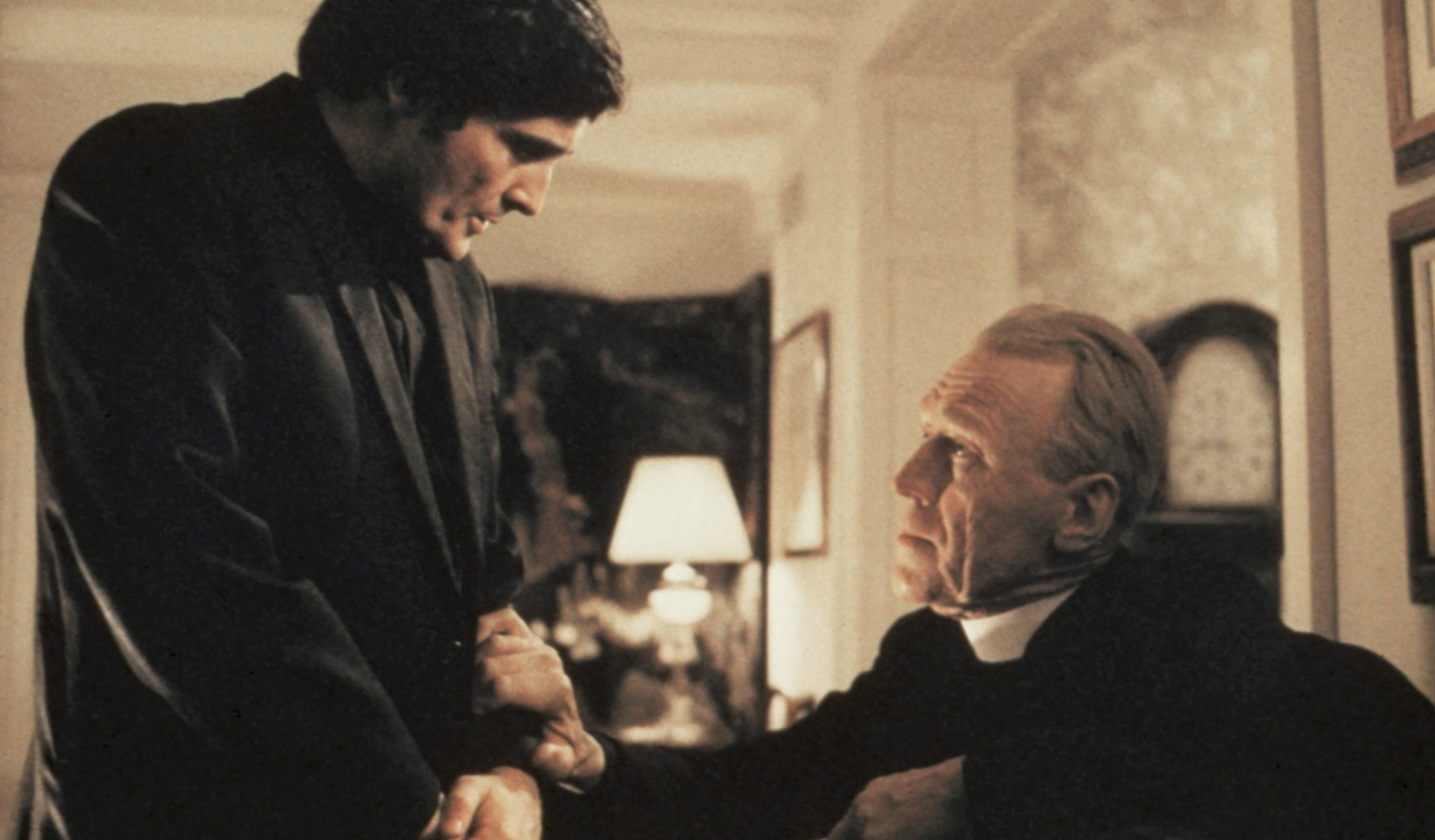
Every year brings new Christmas movies with their often plentiful and phony Christmas cheer. In fact, most of the recent ones released on streaming—such as 2023’s less-than-esteemed bunch—seem designed expressly for their disposability. They’re content as sincere as polyester Christmas roping strung around the company’s copier in the back. You’re meant to watch them with one eye on the phone, and no Christmas Spirit in your heart.
But there was a time, dear reader, when a Christmas movie could be a truly magical thing: an emotional and cathartic experience shared with strangers in a darkened theater that would make you believe in the true meaning of Yuletide as if you were Ebenezer Scrooge on the glorious Christmas morning following the visit of three ghosts. And then some… some Christmas movies made you feel more like Scrooge the night before. Alone. In the dark. Staring at a grave marked by your name and the abyss that lays beneath it. They make you appreciate that the final judgment (if you fancy such thoughts) awaits.
It is in this context that William Friedkin’s The Exorcist looks like the biggest Christmas movie to ever shimmy its way down your chimney. Or at least spider-walk it.
Yes, The Exorcist is a Christmas movie, and one which filled viewers with the Holy Spirit 50 years ago, or at least fear of its antithesis. This began when Friedkin’s fright show about a little girl possessed by the Devil opened on Dec. 26, 1973. It was a day late, but hardly a dollar short. In fact, when adjusted for inflation, The Exorcist still remains one of the 10 highest grossing films in North American history, earning an estimated $1.04 billion in the U.S. alone when adjusted to 2022 dollars. Another way to put that is The Exorcist has still sold more tickets in its homeland than any Marvel Studios film, including Avengers: Endgame.
So The Exorcist did devilishly good business in its heyday, which began smack in the middle of the holiday expanse between Christmas and New Year’s. The only wide December release to do better is James Cameron’s Titanic, and that opened nearly 25 years later. But unlike the film about the sinking boat, The Exorcist actually is a Christmas movie. We’re serious.
While there isn’t a hint of the holly or the ivy on screen, Friedkin and perhaps more crucially screenwriter William Peter Blatty, who adapted his own bestselling novel of the same name, went out of their way to make one of the most heartfelt and spiritual pictures ever conceived for a wider audience of skeptics, agnostics, and apostates. The film is even set adjacently to Christmastime, although the picture never draws attention to this fact. Early on in the film, we Ellen Burstyn’s character walk home on what is supposed to be the beginning of Halloween eve. The sun is still shining and leaves are falling from the trees, but children dressed as ghosts and witches run past her on their way to trick ‘r treating.
The scene in question occurs at the very start of the film, before Linda Blair’s poor little Regan MacNeil has shown any symptoms of coming down with a case of the Pazuzus. Still, we are clued in that a fair amount of time passes between Burstyn’s Chris MacNeil wrapping production on her unnamed film-within-a-film and their Georgetown home turning into a battleground betwixt good and evil. Along the way, we can spot that the wind has picked up, the nights have turned wintry, and in some wide shots of Georgetown, a Christmas decoration or two can be gleaned.
Friedkin never brings attention to the time of year, but enough weeks and months pass in the story for poor Father Karras (Jason Miller) to bury his mother, and Chris to take Regan to every medical expert in D.C. who come to the same conclusion: call a priest. Friedkin, of course, was himself a secularist like Chris—an agnostic man who was raised in the Jewish faith and who in 1973 didn’t believe in demons and ghouls. The film’s screenwriter did, however.
Pulling from an alleged case of actual exorcism that he studied while attending Georgetown, author Blatty believed deeply in the biblical definition of evil and he created a story intended to remind his readers and viewers of its existence too. This was done to scare you, yes, but also to inspire you to believe in the goodness of men’s souls. It even became one of Blatty’s biggest contentions with Friedkin after the director removed a line in the theatrical cut (which was later reinserted in the extended version) where the film’s vessel for most absolute goodness, Father Merrin (Max von Sydow), says: “I think the point is to make us despair. To see ourselves as animal and ugly, to reject the possibility that God could love us.”
This is obviously Blatty’s theory on the alleged phenomena of demonic possession, but the film doesn’t revel in just the abject horror of the concept, but also in the goodness of people doing what is right. In the end, the priests Merrin and Karras are close to saints (at least if you ignore the character assassination of a disparaging Chris MacNeil in the recent The Exorcist: Believer). They give their lives so that poor little Regan will be spared. They don’t lose sight of God’s love and recognize the little girl trapped beneath the hideous monster we bear witness to in the third act.
By freeing her, the film ends on hope of order, goodness, and Christian charity restored. In the final scenes, Chris hesitates going to her daughter at first after seeing her returned to her youth and crying on the floor—but Chris eventually does. Afterward, she decides not to tell Regan what happened to her, but innately Regan recognizes the goodness of the holy men of Christ who saved her, kissing Father Dyer (William O’Malley) on the cheek when she sees his white collar.
The movie is about the renewal of goodness and God in a dark world; a Christmas candle shining during the darkest days of the year. There’s a reason that after the movie came out, real-life Georgetown Jesuit officials told The New York Times that “people are coming from all over to see the chapel, to hear mass, to discuss exorcism.” It put the fear of God into them, and also gave an increasingly secular public renewed interest in the power of the Holy Spirit. For better or probably much worse, it even turned priests into warrior monks, heroes on their way to do battle with the Devil himself.
Friedkin made a film that felt real enough to the average moviegoer that they’d be forced to believe something even the director did not at that time. In the process, he helped spread his screenwriter’s message of hope and faith, ending the story on the triumph of Good with a capital G. This is particularly true in the extended cut, as Blatty famously loathed the more downbeat note the theatrical cut of the film ended on. Instead the writer preferred the note of good people building a new community, in lieu of the budding friendship between Father Dyer and the police detective Lt. Kinderman (Lee J. Cobb).
And when Blatty followed up on that thread in the sequel he wrote and directed, The Exorcist III, he set the film explicitly at Christmastime, with the pair off to watch It’s a Wonderful Life. Perhaps there’s a double feature in that.
The post The Exorcist Might Just Be the Biggest Christmas Movie Ever appeared first on Den of Geek.





